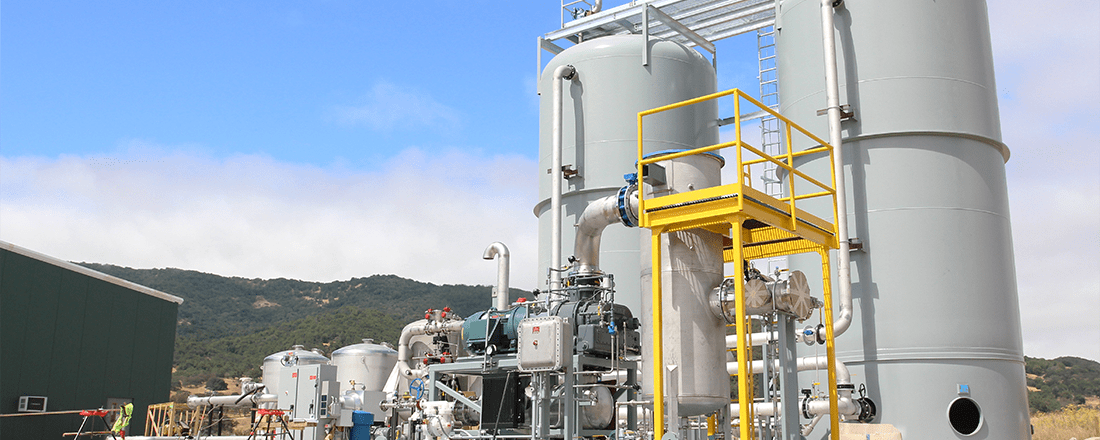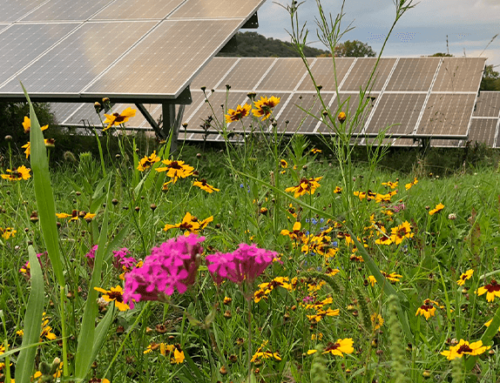This blog explores how we can maximize the benefits of bioenergy through sustainable and responsible procurement practices and covers:
● Benefits of bioenergy as an electricity source
● Bioenergy environmental considerations
● MCE’s bioenergy procurement practices
Bioenergy makes up 40% of renewable energy that is generated in the United States. While this form of renewable energy can play a meaningful role in the clean energy transition, it must be procured responsibly to maximize benefits. In this blog, we cover bioenergy environmental considerations and MCE’s commitment to responsible bioenergy procurement.
What is bioenergy?
Bioenergy is a type of energy generated from organic matter or biomass such as agricultural crops, agriculture waste, municipal waste, or animal waste. The energy in biomass can be harnessed for use in the following ways:
- Combustion: Biomass is burned to produce steam, which drives a turbine and generates electricity.
- Anaerobic digestion: Biomass is broken down by bacteria to produce biogas, which can be used to generate electricity or heat.
- Biofuels: Biomass is converted into liquid fuels such as ethanol and biodiesel, which can be used for transportation.
What are the benefits of bioenergy?
When procured sustainably, bioenergy offers the following benefits:
- Renewable energy: Because bioenergy is abundant and regenerates quickly, the California Energy Commission qualifies it as a renewable electricity source.
- Reliability: Bioenergy plants can generate electricity regardless of the weather or time of day and can be easily turned on or off in response to electricity demand.
- Carbon Neutrality: While burning biomass for energy generation releases CO2 emissions, the plants sourced for biomass capture an almost equivalent amount of CO2 through photosynthesis over their lifetime.
- Waste Reduction: Bioenergy generation can divert waste and use it for electricity, dramatically reducing the climate-change-causing emissions associated with landfills and dairy farms.
- Green jobs: The bioenergy industry has already created 285,000 domestic jobs, and has the potential to expand in the coming years.
What are the environmental impacts of bioenergy?
As biomass technology improves and the cost of creating facilities decreases, it’s important to implement sustainable practices that address the environmental considerations of bioenergy.
- Not Carbon-Zero: While biomass can be considered carbon neutral, it still generates emissions and is therefore not a carbon-zero energy source like solar or wind.
- Air pollution: Generating bioenergy can release pollutants into the air such as nitrogen oxides, carbon monoxide, and methane. While bioenergy generation is not emissions-free, it’s worth noting that generating bioenergy from waste produces far less methane than traditional disposal methods.
- Land and Water Use: MCE advocates against growing crops for the sole purpose of generating bioenergy because it’s highly land- and water-intensive.
- Environmental impact: If biomass isn’t procured sustainably, it can lead to deforestation and loss of biodiversity.
How does MCE ensure sustainable bioenergy procurement?
Biomass and biowaste make up around 6% of MCE’s Light Green electricity service. MCE is committed to maximizing the potential benefits of bioenergy through sustainable and responsible procurement. MCE’s Principles on Responsible Biomass Electricity Development ensure that the biomass facilities we contract with have the appropriate permits for the California Environmental Quality Act and local air district, use the best available control technology, and support sustainable forest management and wildfire reduction strategies.
We also prioritize contracts that comply with the following:
- Use a source of organic material that has been diverted from landfill
- Support sustainable forest management and wildfire reduction waste
- Offer carbon neutral resources and adaptations
- Proactively minimize local air quality impacts, both from the facility and from the transportation of fuel from its source to the facility






